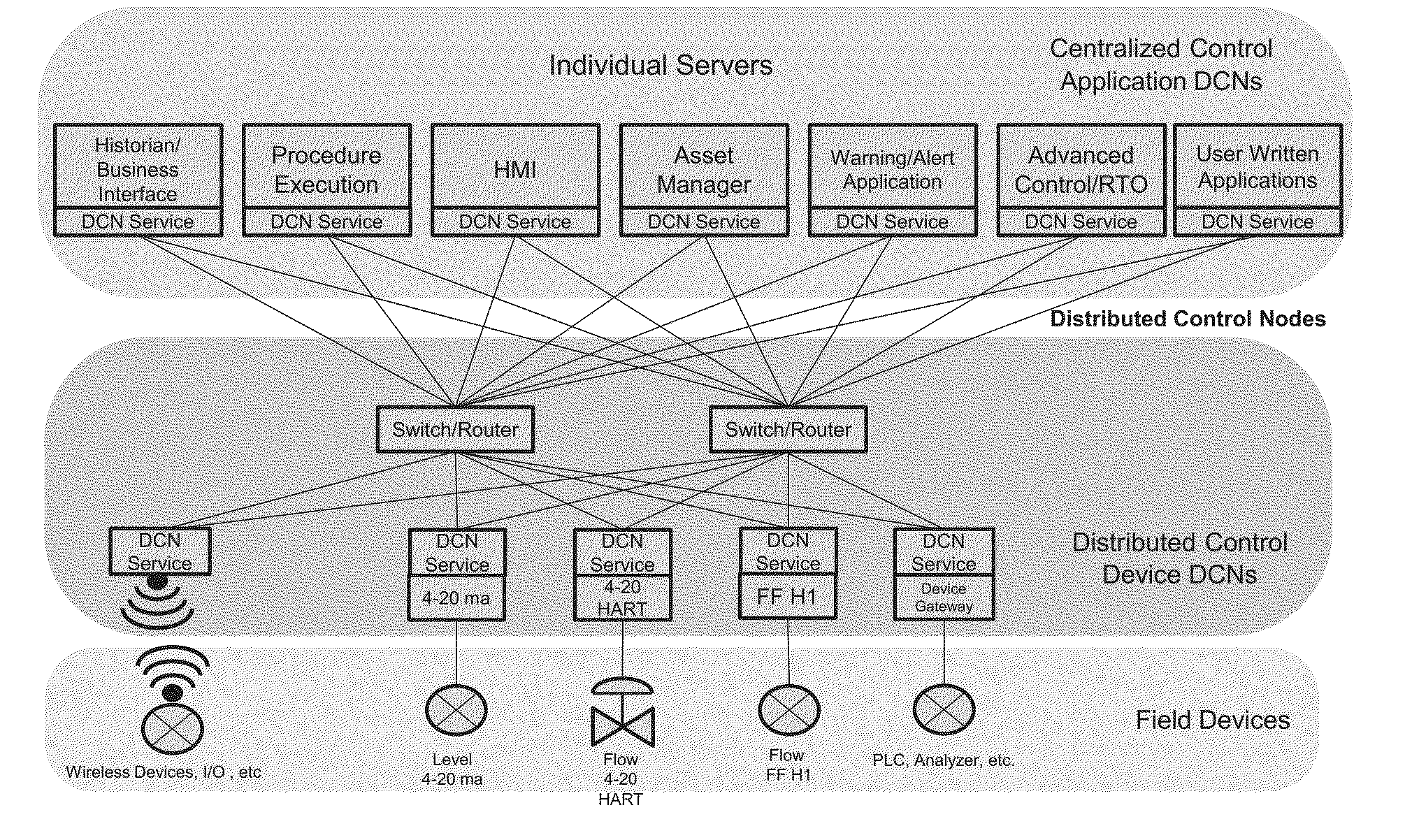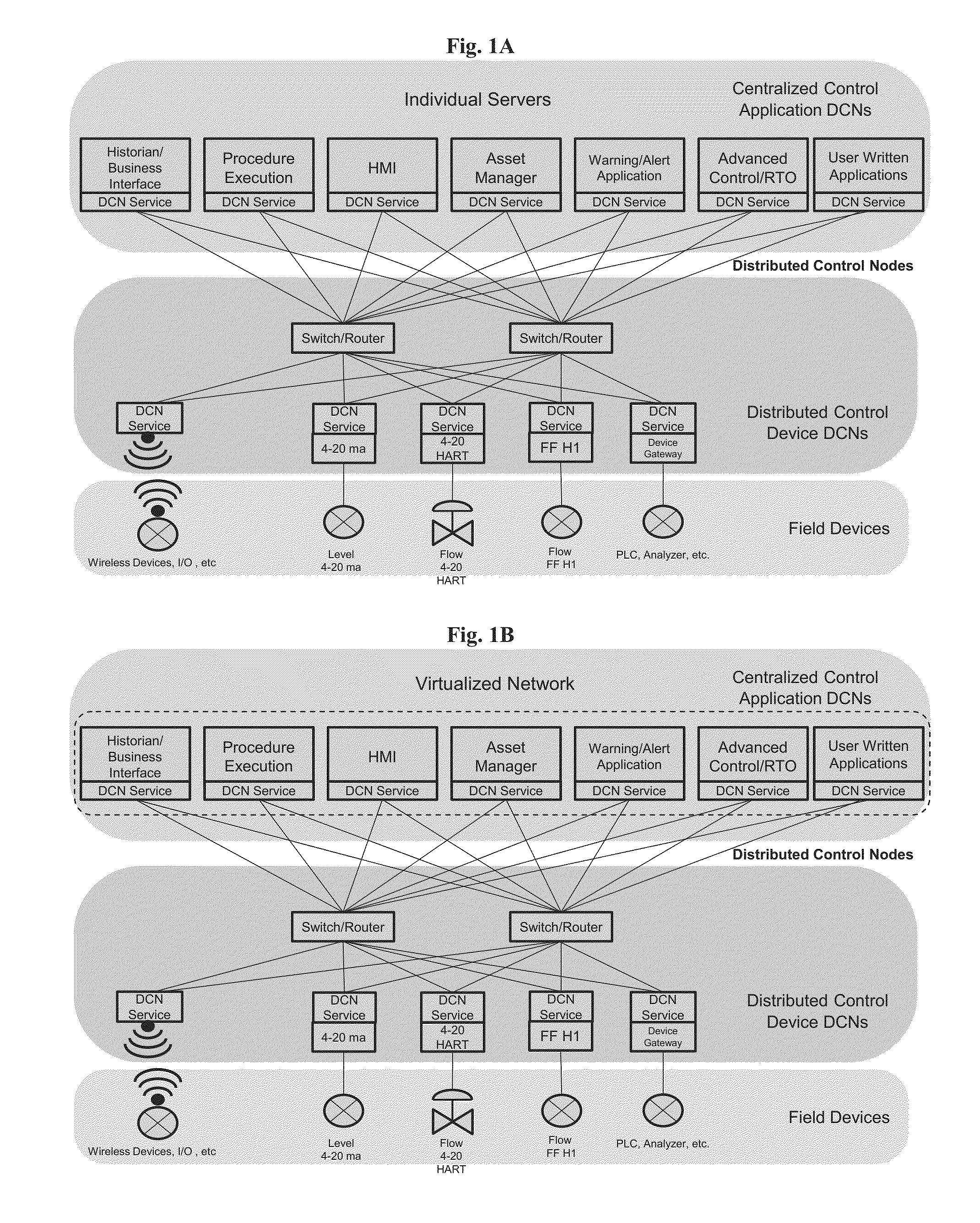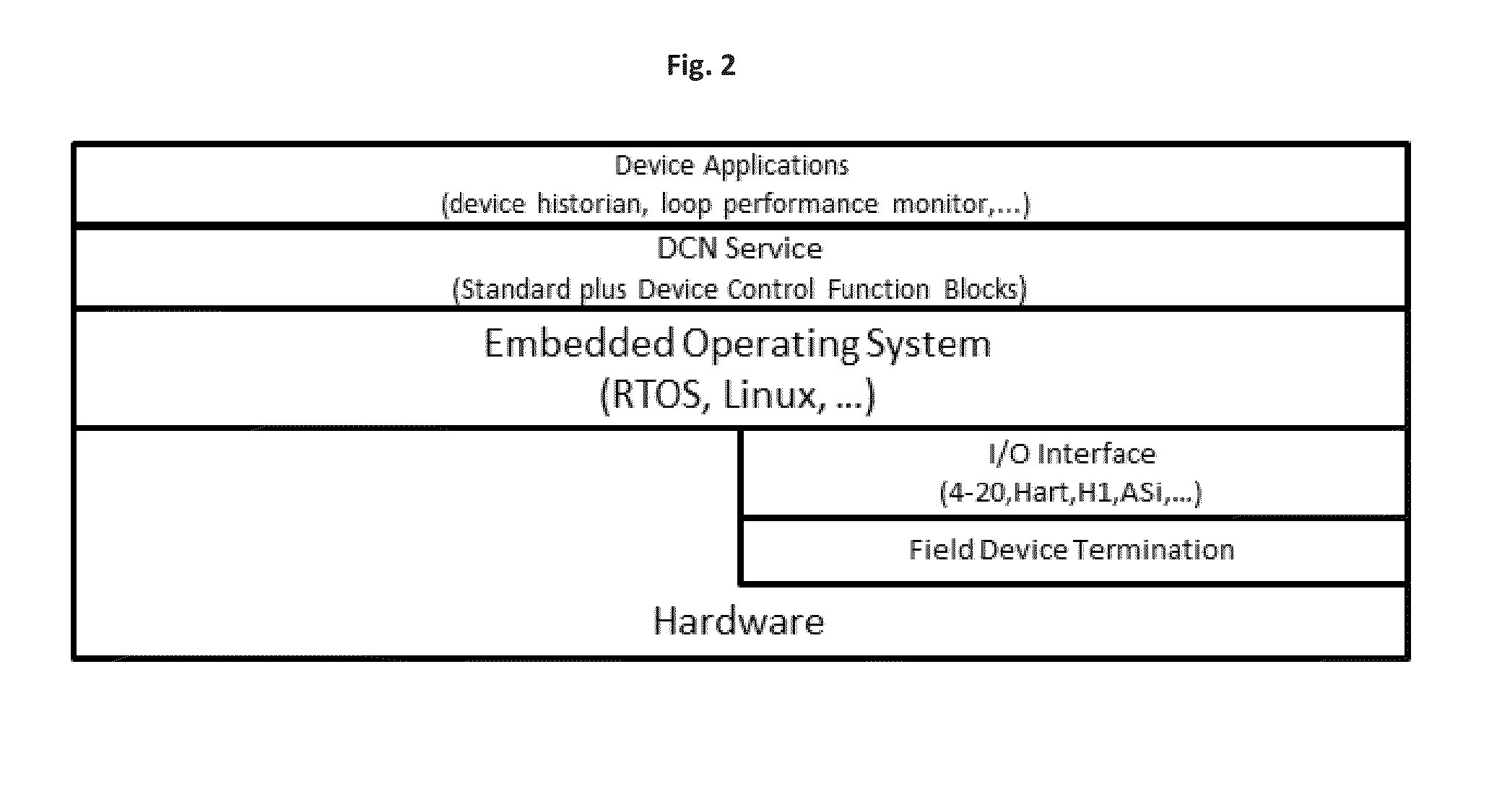Method and system for modular interoperable distributed control
a distributed control and modular technology, applied in the field of modular interoperable distributed control system, can solve the problems of limiting the use of that i/o to only one controller, lowering the return on capital employed, and losing opportunities
- Summary
- Abstract
- Description
- Claims
- Application Information
AI Technical Summary
Benefits of technology
Problems solved by technology
Method used
Image
Examples
Embodiment Construction
[0027]As noted above, methods and systems disclosed herein include a modular interoperable distributed control system for distributed control of an industrial process. Generally, for purpose of illustration and not limitation, a DCS in accordance with the disclosed subject matter can include fully distributed control, an interoperable and interchangeable “application” system model based on International Standards, and visibility into control, process, and equipment.
[0028]In accordance with one aspect of the disclosed subject matter, a system for controlling an industrial process using a plurality of distributed control nodes can include a plurality of Device DCNs, each Device DCN including an I / O interface coupled with a field device for single channel input or output, a plurality of Application DCNs, and one or more Ethernet switches. The plurality of Device DCNs and the plurality of Application DCNs can be adapted to host a software runtime and communicatively coupled via the one ...
PUM
 Login to View More
Login to View More Abstract
Description
Claims
Application Information
 Login to View More
Login to View More - R&D
- Intellectual Property
- Life Sciences
- Materials
- Tech Scout
- Unparalleled Data Quality
- Higher Quality Content
- 60% Fewer Hallucinations
Browse by: Latest US Patents, China's latest patents, Technical Efficacy Thesaurus, Application Domain, Technology Topic, Popular Technical Reports.
© 2025 PatSnap. All rights reserved.Legal|Privacy policy|Modern Slavery Act Transparency Statement|Sitemap|About US| Contact US: help@patsnap.com



